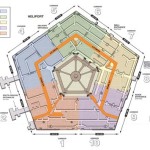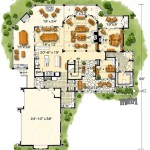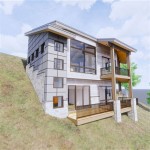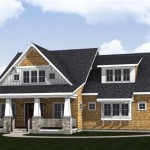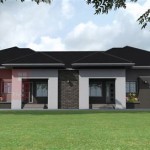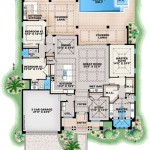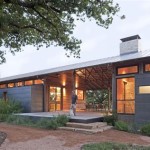```html
Multi-Level House Plans: A Comprehensive Guide
Multi-level house plans, characterized by their distinct vertical separation of living spaces, offer a unique approach to residential design. This design philosophy deviates from single-story or ranch-style layouts by incorporating multiple floors, each potentially serving a different primary function. These plans can cater to a variety of needs, ranging from optimizing space on limited land to providing distinct zones for privacy and activity. The complexity and architectural styles associated with multi-level homes are diverse, spanning from split-level designs to full three-story structures and beyond.
The decision to pursue a multi-level house plan is often driven by factors such as lot size, the desired layout, the need for visual separation between functional zones within the house, and aesthetic preferences. Understanding the advantages and disadvantages, as well as the various design options available, is crucial for prospective homeowners considering this type of housing.
Advantages of Multi-Level House Plans
One of the primary advantages of multi-level homes is efficient land utilization. In areas where land is scarce or expensive, building vertically allows homeowners to maximize their living space without requiring a large footprint. This can be particularly beneficial in urban or suburban settings where lot sizes are typically smaller. A multi-level design allows for a greater square footage of living space compared to a single-story home on the same size lot.
Another key advantage is the inherent separation of living zones. Different levels can be designated for specific activities, such as sleeping quarters on the upper floors, living and dining areas on the main floor, and recreational or storage spaces in the basement or lower levels. This segregation can reduce noise transmission and enhance privacy, creating a more comfortable and functional living environment for families with diverse lifestyles. For example, a home office could be located on a separate level to minimize distractions, while children's play areas could be situated away from more formal living spaces.
Furthermore, multi-level designs can offer enhanced views, particularly if the home is situated on a sloping lot or in an area with desirable scenery. Upper floors often provide better vantage points, allowing residents to enjoy panoramic views and increased natural light. Strategically placed windows and balconies can capitalize on these advantages, enhancing the overall ambiance and value of the property.
Finally, multi-level house plans often lend themselves to more interesting and dynamic architectural designs. The verticality of the structure allows for more diverse rooflines, window placements, and overall aesthetic features. This can result in a more visually appealing and unique home compared to simpler single-story designs.
Disadvantages of Multi-Level House Plans
Despite the numerous advantages, multi-level house plans also present several potential disadvantages. The most prominent concern is the increased requirement for stairs. Stairs can pose challenges for individuals with mobility issues, including the elderly, young children, and those with physical disabilities. While elevators or chairlifts can be installed to mitigate this issue, they represent a significant additional expense and require ongoing maintenance. Even for able-bodied individuals, navigating multiple flights of stairs daily can become tiring over time.
Construction costs for multi-level homes are typically higher compared to single-story homes of similar square footage. This is due to the increased complexity of the foundation, framing, and roofing systems required to support multiple levels. Additionally, the need for specialized trades, such as elevator installers, can further contribute to higher construction costs. Engineering requirements for structurally sound multi-level buildings are more stringent, adding another layer of expense.
Heating and cooling multi-level homes can also be more challenging and expensive. Temperature variations between different levels can occur, with warm air rising to the upper floors and cooler air settling on the lower floors. This can lead to uneven heating and cooling, requiring more sophisticated HVAC systems and potentially higher energy bills. Zone-controlled systems, which allow for independent temperature regulation in different areas of the house, can help to address this issue but require additional investment.
Finally, communication within the household can sometimes be hindered by the physical separation of different levels. It may be more difficult to maintain a sense of connection and interaction when family members are dispersed throughout the house. This can be particularly relevant for families with young children who require supervision. Careful consideration of the layout and placement of communal areas can help to mitigate this potential drawback.
Key Considerations When Choosing a Multi-Level House Plan
Before committing to a multi-level house plan, several key considerations should be carefully evaluated. The first is the topography of the building site. Sloping lots are often well-suited for multi-level designs, as they can facilitate the creation of walk-out basements or split-level configurations. However, building on a steep slope can also present challenges and increase construction costs. A thorough site assessment is essential to determine the feasibility and cost-effectiveness of a multi-level design on a specific property.
Another crucial consideration is the lifestyle and needs of the homeowners. Families with young children may prioritize a layout that allows for easy supervision and proximity, while empty-nesters may prefer a design that minimizes the need for stairs and provides ample space for entertaining. Considering the long-term needs of the household is essential to ensure that the multi-level design remains functional and comfortable for years to come.
Budgetary constraints are also a significant factor. As mentioned earlier, multi-level homes typically cost more to build and maintain than single-story homes. It is important to establish a realistic budget and to carefully evaluate the cost implications of different design choices. Prioritizing essential features and selecting cost-effective materials can help to keep the project within budget without sacrificing quality or functionality. Consulting with experienced builders and architects can provide valuable insights into cost-saving strategies.
Accessibility is another key consideration, particularly for homeowners who plan to age in place or who have family members with mobility limitations. Incorporating universal design principles, such as wider doorways, ramps, and accessible bathrooms, can enhance the usability and adaptability of the home. Even if accessibility is not a current concern, planning for future needs can add value and longevity to the property.
Finally, the aesthetic appeal of the multi-level design should be carefully considered. The architectural style should complement the surrounding environment and reflect the personal preferences of the homeowners. Working with a skilled architect can help to create a visually appealing and functional design that maximizes the potential of the multi-level concept.
In conclusion, multi-level house plans offer a versatile and potentially advantageous approach to residential design. While they present certain challenges, such as increased construction costs and accessibility concerns, they also offer significant benefits in terms of land utilization, zone separation, and aesthetic appeal. Careful consideration of the aforementioned factors is essential to determine whether a multi-level design is the right choice for a particular homeowner and property.
```Split Level Homes Designs G J Gardner

Split Level House Plans Home Plan 126 1083

Split Level Home Designs Stroud Homes

4 Bedroom Split Level House Plan 2136 Sq Ft 2 Bathroom

Split Level House Plans And Foyer Floor

Plan No E 604 Mid Century Modern Split Level House Plans Craftsman Style Residential Architecture

Contemporary Style House Plan 4 Beds 2 5 Baths 2495 Sq Ft 17 2798 Split Level Plans Floor

Modern Split Level House Plans And Multi Floor Plan Designs

Multi Level Floor Plan New Build Cecilia Moyer Lifestyle Blogger

Split Level House Plans Home Design 3266

